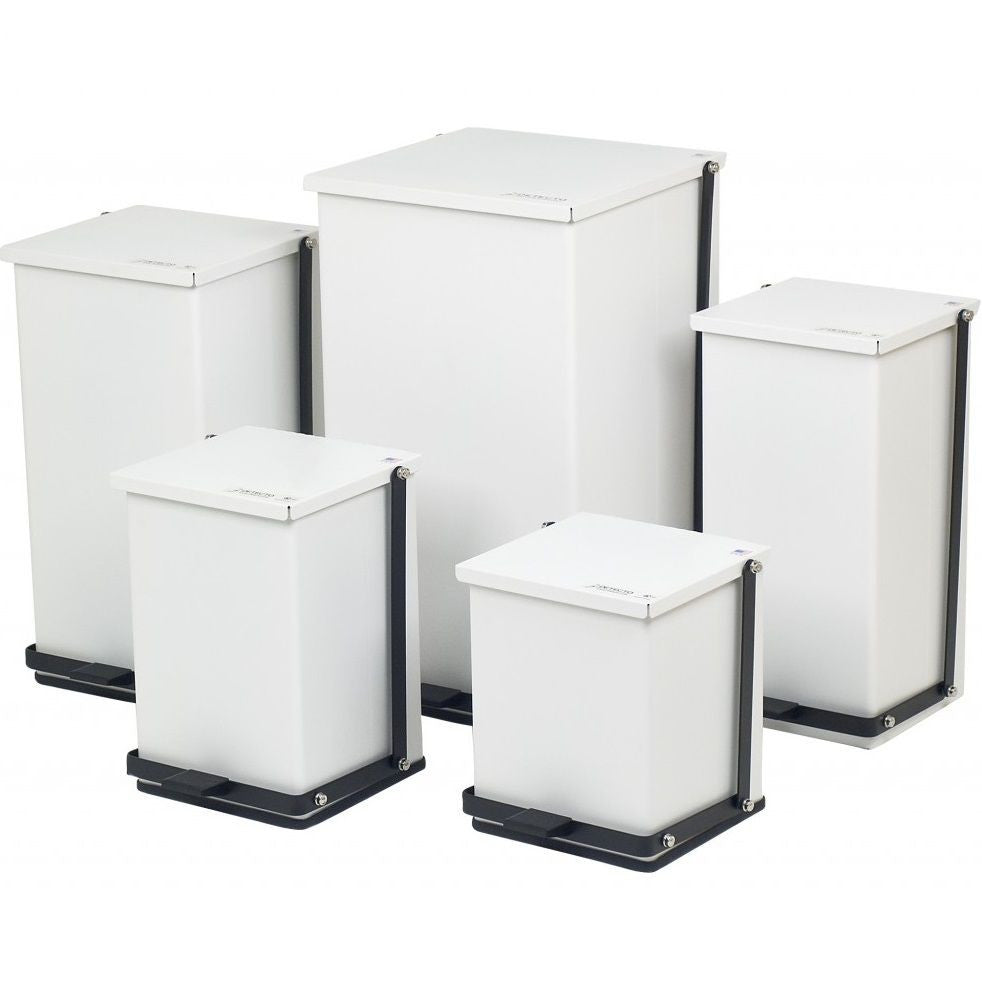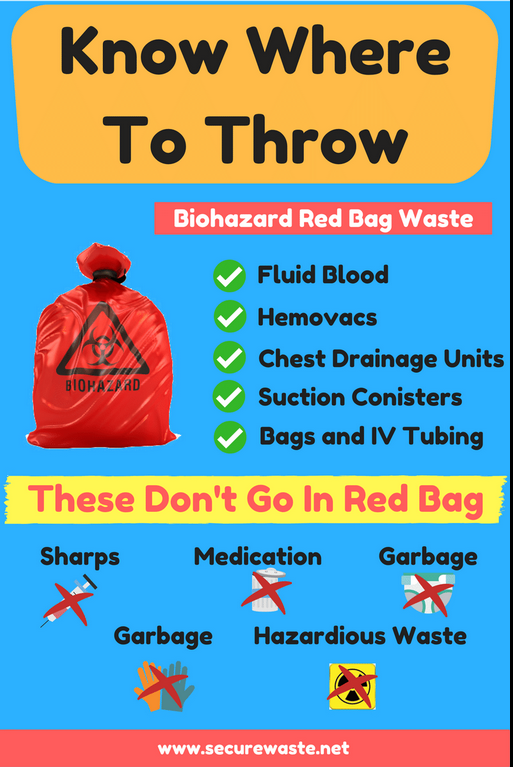Safety and security First: Your Overview to Liable Medical Waste Removal Services
Keep Ahead of Regulations: Professional Recommendations on Medical Garbage Disposal
In a world where the medical care industry is continuously progressing, it is important for medical facilities to stay ahead of guidelines when it pertains to the correct disposal of clinical waste. With rigorous standards and regular regulative changes, it can be challenging to navigate the complexities of this procedure. With expert recommendations, centers can make sure compliance and minimize threats linked with inappropriate waste disposal. From recognizing the various classifications of clinical waste to applying the appropriate collection and partition techniques, this discussion will certainly supply useful insights and actionable pointers to assist facilities remain ahead of laws in the ever-changing landscape of clinical waste disposal.
Comprehending Clinical Waste Categories
Understanding clinical waste groups is necessary for proper disposal and monitoring in healthcare centers. Clinical waste refers to any kind of waste produced by healthcare activities that may present a threat to public health and wellness or the environment. It is vital to classify medical waste properly to guarantee its safe handling, transport, disposal, and treatment.
There are numerous categories of medical waste that medical care centers require to be aware of. The most typical classifications consist of infectious waste, pathological waste, sharps waste, pharmaceutical waste, and chemical waste. Each category has specific guidelines and laws for its proper management and disposal.
Contagious waste includes materials polluted with blood or other bodily fluids, such as gloves, gowns, and laboratory cultures. Pathological waste refers to human tissues, organs, or body parts that need special handling and disposal. Sharps waste consists of made use of needles, syringes, and other sharp things that can cause injury and transmit infections. Pharmaceutical waste makes up ended, extra, or polluted medications that require careful handling and disposal. Lastly, chemical waste includes solvents, disinfectants, and other chemical substances made use of in medical care centers.
Staying Up-To-Date With Regulatory Changes
Remaining existing with regulative adjustments is crucial for medical care centers to make certain conformity and proper management of medical garbage disposal. medical waste removal. With regulations constantly evolving, it is essential for medical care facilities to remain updated to prevent penalties, fines, and possible harm to the atmosphere and public health
To stay ahead of regulatory changes, health care facilities need to establish a system for monitoring and tracking updates. This can be done by signing up for governing newsletters, attending seminars and workshops, and proactively joining industry associations. In addition, centers ought to mark an employee or team in charge of staying notified and disseminating info to relevant stakeholders.
Routine interaction with regulatory firms is also crucial. Healthcare facilities must establish relationships with regional, state, and government firms to ensure they are mindful of any kind of changes in laws that might influence their waste administration methods. This can be done through routine meetings, engagement in public comment durations, and proactive interaction with governing firms.
Additionally, healthcare centers should consider partnering with waste administration business that concentrate on medical garbage disposal (medical waste disposal services with WasteX). These business are frequently fluent in the most up to date policies and can provide assistance and assistance to make certain compliance
Executing Appropriate Collection and Segregation Techniques
To properly take care of clinical garbage disposal, medical care centers have to develop correct collection and partition approaches according to governing standards. Applying these techniques makes sure the risk-free handling and disposal of potentially dangerous materials, protects the setting, and reduces the risk of infections and injuries to healthcare employees and the public.
Correct collection and partition techniques include the use of marked containers and classifying systems. Medical care centers must offer clearly classified containers for various kinds of medical waste, such as sharps, transmittable waste, pharmaceutical waste, and non-hazardous waste. These containers need to be color-coded and clearly marked to stay clear of complication and advertise easy recognition.
Furthermore, healthcare centers ought to train their team on the proper treatments for collecting and segregating medical waste. This consists of enlightening them on the various sorts of waste, the ideal containers to utilize, and the significance of adhering to guidelines and regulations. Routine training sessions and refresher programs should be carried out to guarantee that team member stay up-to-date on ideal methods.
Furthermore, medical care facilities must develop a system for regular collection and disposal of clinical waste. This might involve partnering with qualified waste management business that specialize in medical garbage disposal. medical waste disposal services with WasteX These companies will certainly make certain that the gathered waste is carried and taken care of in compliance with regulative requirements.
Selecting the Right Disposal Methods

Incineration is just one of the most common and effective techniques for dealing with particular kinds of medical waste, such as pathological waste and sharps. YOURURL.com It involves the controlled burning of waste at heats, decreasing it to ash. Incineration can release harmful contaminants right into the air and add to air contamination.

Chemical therapy entails the usage of chemicals to sanitize and counteract the waste. Microwave treatment uses microwave energy to heat and disinfect the waste.
Guaranteeing Compliance Through Paperwork and Training
After thoroughly thinking about the proper disposal techniques for medical waste, healthcare facilities have to ensure conformity with regulations and decrease ecological effect by carrying out effective documentation and training procedures. This action is critical in keeping a risk-free and sustainable environment for both healthcare employees and the basic public.

Training is similarly crucial in ensuring compliance with guidelines. Medical care employees that handle medical waste must obtain appropriate training on waste segregation, taking care of, and disposal procedures. This training must cover subjects such as the proper use of individual safety tools, recognition of different kinds of waste, and the correct disposal methods for every waste classification. By supplying thorough training, medical care facilities can equip their team to make enlightened choices and decrease the threat of inappropriate garbage disposal.
Conclusion
In final thought, staying ahead of laws in clinical garbage disposal is vital for healthcare facilities. medical waste removal services. Comprehending the different categories of clinical waste, staying have a peek here updated with regulatory adjustments, executing proper collection and partition techniques, choosing the ideal disposal techniques, and making sure compliance via paperwork and training are all vital steps. By adhering to these guidelines, medical care organizations can effectively get rid of and handle of clinical waste in a accountable and secure way
From understanding the different groups of medical waste to implementing the ideal collection and partition techniques, this conversation will give important understandings and actionable ideas to aid facilities remain in advance of regulations in the ever-changing landscape of medical waste disposal. - medical waste disposal services with WasteX
The most usual groups consist of infectious waste, pathological waste, sharps waste, pharmaceutical waste, and chemical waste. Healthcare facilities should offer clearly identified containers for various types of medical waste, such as sharps, contagious waste, pharmaceutical waste, and non-hazardous waste. Health care centers should establish a comprehensive system to tape-record and track all aspects of medical waste disposal, including kinds of waste created, quantities, and disposal techniques utilized. Healthcare workers that take care of clinical waste must receive appropriate training on waste segregation, handling, and disposal treatments.